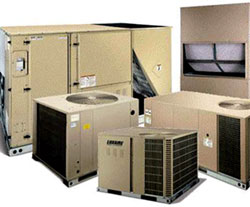
Categories
- Home
- Types Of Gas Ventilation
- Equipment Gas Ventilation
- Gas Appliances Ventilation
- Gas Boiler Ventilation
- Gas Heater Ventilation
- Gas Meter Ventilation Requirements
- Gas Pipe Ventilation
- Gas Range Downdraft Ventilation
- Gas Roof Ridge Ventilation
- Gas Stove Ventilation
- Gas Ventilation Grills
- Gas Ventilation Products
- Gas Ventilation Units
- Heating System Gas Ventilation
- Marine Oil And Gas Ventilation
- Mechanical Gas Ventilation Systems
- Mobile Home Gas Ventilation
- Natural Gas Ventilation
- Roof Ventilation
- Soil Gas Ventilation
- Type B Gas Ventilation
- Underfloor Gas Ventilation
- Gas Ventilation Explained
- Gas Ventilation Suppliers
Gas Meter Ventilation Requirements
The people that live in areas where natural disasters are common tend to be more aware about the gas meter ventilation requirements. Nevertheless, regardless of the place where you live, it can come in handy to know the specific regulations and requirements that have to do with your gas meter ventilation. When it comes to the location and the temperature for your gas meter, there are standards that every household and business must comply with. In addition, it’s your very own responsibility to review the gas meter ventilation requirements for your state or region.
Location of the Gas Meter
When you hire a professional contractor, they will most likely let you know what the gas meter ventilation requirements are, because it’s imperative that you as the homeowner are aware of the regulations stated by the law. Moreover, there are some restrictions that apply if the gas meter will be installed in the interior of the building, such as:
- Must be installed close to the entrance
- Sometimes the attic or basement are the best places to install the gas meter
- Gas meter ventilation requirements include a clean area
- No steam or vapor should be near the gas meter
- Should be placed where it can be reached and read easily
- The area should be ventilated appropriately
The gas meter ventilation requirements determine that the location of the gas meter can be outside only if it’s verified that dry gas is affected.
Gas Regulator and Vents
Following the directions and gas meter ventilation requirements established by your local authorities is essential, because it is related to the health of your family. In case that you own a business, it’s critical that you provide a safe working environment for all of your employees, and if you fail to do so, you might find yourself paying expensive fines. Gas ventilation is important due to its ability of helping gas to reach combustion, and if there is no proper ventilation, a poisonous gas may pose a threat to your health. Furthermore, gas vents play an important part when it comes to regulating the pressure that is needed to produce proper combustion, since they help gas circulate freely in the room. Another point stated by the gas meter ventilation requirements is that the gas pressure must not go over the maximum level.
Additional Gas Meter Ventilation Requirements
Every state in the United States has its own set of rules in regards to different matters, such as license issuance or construction restrictions. Certainly, gas meter ventilation requirements fall under this category, since they may differ depending on the state that you are currently in. Any licensed contractor will be aware of the additional requirements (if any) that need to be met, and they will discuss them with you after the installation has been completed. Keep in mind that these additional gas meter ventilation requirements may vary from state to state, but may include the following:
- Installation of an alarm system to detect leakage
- Alternate gas ventilation system as back up
- Adequate construction ventilation
- Inspection must be done by owner as well
